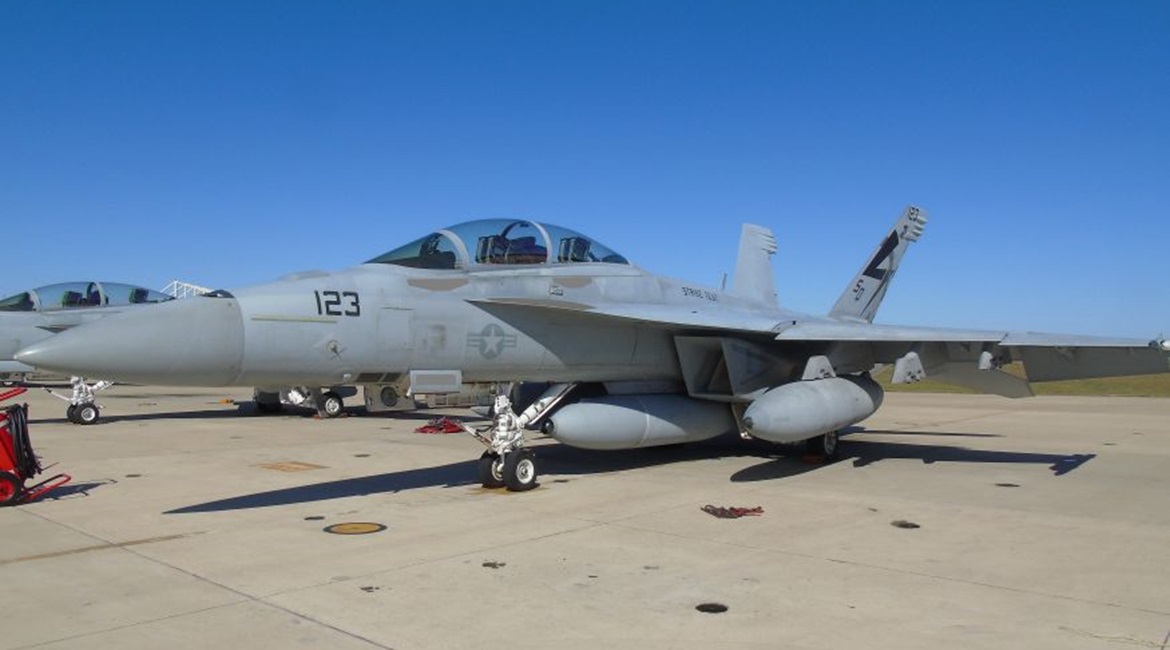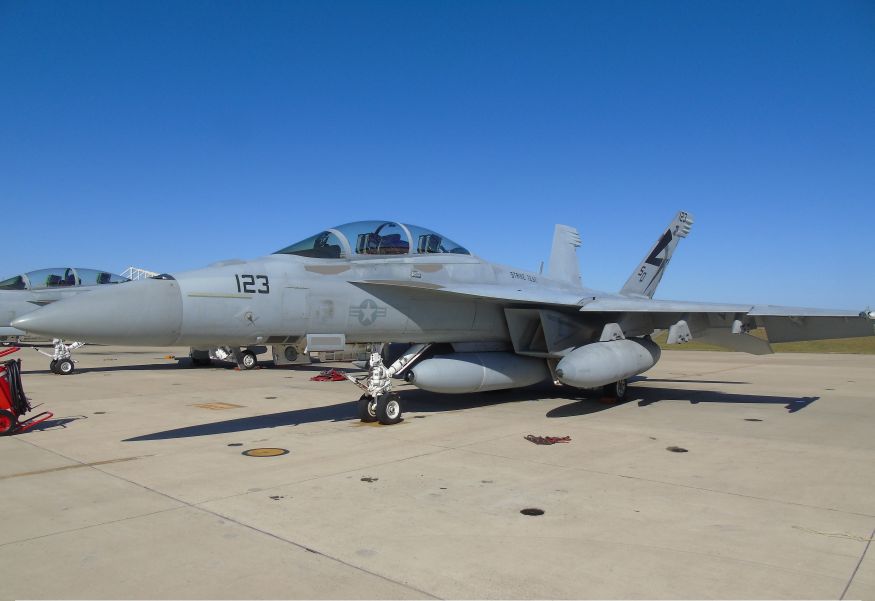
The US Navy (USN) and Boeing have flown the new Block 2 infrared search and track (IRST) long-range passive targeting pod on the F/A-18E/F Super Hornet combat aircraft.

The Block 2 IRST centerline pod will enable the Super Hornet to identify and track aircraft from their thermal signature. (Boeing)
The flight, which was announced by Boeing on 15 January, took place in late 2019. The IRST is currently in its risk-reduction phase of development; the flights on the Super Hornet allow the USN and Boeing to collect data on the system before delivery to the navy in 2021.
The USN's Super Hornets already field an IRST in the guise of the podded AN/ASG-34. This system, which was developed by Lockheed Martin, with assistance from Boeing and General Electric, is not integrated into the aircraft but is instead housed in a modified centreline drop tank that is carried on the centreline hardpoint. With this system, the Super Hornet is able to identify and track aircraft from their thermal signature (either through the engine or the aerodynamic heating of the airframe).
As previously noted to Jane’s , the Block 2 IRST is to be used to counter low observable, or stealth, targets. Speaking in 2019, Bob Kornegay, capture team lead F/A-18 programme, noted that the USN opted to remain with the podded solution rather than to go with an integrated system as this was the quickest way to get the capability onto the aircraft and fielded. While Kornegay, declined to comment on the system’s range, he said that early pilot feedback had been “eye watering”.
Looking to read the full article?
Gain unlimited access to Janes news and more...






